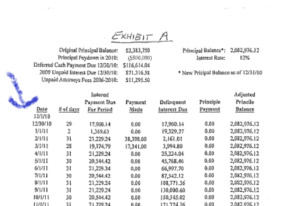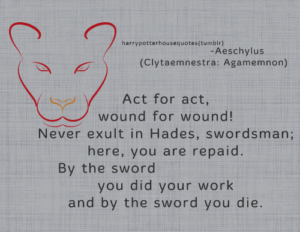“Questions of jurisdiction are questions of power,” said Supreme Court Justice Benjamin Curtis. That observation – both simple and profound – provides a useful lens to examine the sweeping changes in the Texas intermediate courts of appeal after the 2018 election. This post considers how three sentences from recent opinions by the Dallas Court of Appeals involve questions of power that may be addressed in new ways by the newly-constituted Texas appellate courts.
THREE SENTENCES
Judge and jury. The 2018 case of AVPM Corp. v. Childers involved a substantial jury verdict against a landlord, arising from a sexual assault on a tenant. The Fifth Court concluded that under the relevant Texas Supreme Court opinion, no evidence supported the verdict as to proximate causation, noting that “appellees presented no evidence at trial of any recent criminal conduct in the area of [the apartment] similar to the incident in question.” The Court agreed with the plaintiffs’ contention that “foreseeability is uniquely a fact issue for the jury and should only be set aside under the most exceptional circumstances,” but reasoned that “the analysis of foreseeability is the same for both duty and proximate cause.” Duty, of course, is generally seen as a question of law for the court rather than a jury issue. The division of power between judge and jury, as reflected in the above sentence, will likely be a topic of discussion in 2019 opinions.
Court and counsel. B.C. v. Steak & Shake, on remand from the Texas Supreme Court in 2017, turned in part on whether the trial court could consider a late-filed summary judgment response in a case about an alleged workplace assault. A 2-1 majority affirmed the trial court’s summary judgment, concluding: “We recognize, as other  courts have, the apparent injustice in allowing a no-evidence summary judgment to stand when ‘the record discloses not only that evidence exists to support the challenged element, but that the evidence was before the trial court.’ But both the language of the summary judgment rule, and the impropriety of asking the trial court to take on the nonmovant’s burden of identifying fact issues, dictates the result.”
courts have, the apparent injustice in allowing a no-evidence summary judgment to stand when ‘the record discloses not only that evidence exists to support the challenged element, but that the evidence was before the trial court.’ But both the language of the summary judgment rule, and the impropriety of asking the trial court to take on the nonmovant’s burden of identifying fact issues, dictates the result.”
The dissent would have ruled otherwise, noting that “the movant’s factual summary retold, cited, and provided the nonmovant’s testimony contradicting the motion’s assertion that there was no such evidence and further directly provided the responsive evidence.” This kind of waiver question – close even among three Justices from the same political party – may be seen differently by a new panel. And while on its face such an issue may seem hypertechnical, its resolution goes to the very definition of what issues a court should consider in the exercise of its judicial duties.
 Appeals court and trial court. In re: LaFredo arose from a divorce proceeding involving a same-sex couple; one of the parties sought a writ of mandamus on the ground that the marriage had ended before the U.S. Supreme Court’s opinion on the constitutionality of such marriages. The Fifth Court denied the petition in 2018, in part because: “ “The legal question of whether Obergefell is retroactive has not been determined by the Supreme Court of Texas or by the U.S. Supreme Court. The trial court, therefore, did not fail to correctly analyze or apply the law or reach an arbitrary and unreasonable decision when it determined that relator had not established as a matter of law that no legal marriage existed . . . .”
Appeals court and trial court. In re: LaFredo arose from a divorce proceeding involving a same-sex couple; one of the parties sought a writ of mandamus on the ground that the marriage had ended before the U.S. Supreme Court’s opinion on the constitutionality of such marriages. The Fifth Court denied the petition in 2018, in part because: “ “The legal question of whether Obergefell is retroactive has not been determined by the Supreme Court of Texas or by the U.S. Supreme Court. The trial court, therefore, did not fail to correctly analyze or apply the law or reach an arbitrary and unreasonable decision when it determined that relator had not established as a matter of law that no legal marriage existed . . . .”
Texas courts have traditionally held that a trial court lacks discretion to apply the law incorrectly. That differs from the federal practice, where the Fifth Circuit has refused to grant a writ of mandamus when a legal issue is either disputed or not settled by controlling authority and is thus not “clear.” This sentence thus suggests a willingness, even by members of an all-Republican court, to narrow this aspect of the test for when mandamus relief is appropriate. It remains to be seen whether the new court of appeals majorities will build on that suggestion – and if they do, whether the Texas Supreme Court will agree. However addressed, this seemingly-technical aspect of mandamus aspect could have a significant effect on the division of power between trial and appellate courts.
CONCLUSION
These three sentences illustrate appellate issues that seem routine and technical. They each implicate, however, basic questions about the nature and extent of judicial power. The approaches to such issues in the years ahead will be fascinating to observe and important to study.
[A version of this article ran in the Texas Lawbook in November 2018.]
 In the course of rejecting the plaintiff’s claim of an attorney-client relationship with the defendant, the Fifth Court noted: ‘[W]e are mindful that three Strasburger billing entries from October 6, 2009, October 14, 2009, and November 2, 2009 referred to TSI as “client” and “clients.” However, the remaining billing entries from October 6, 2009 to December 15, 2009 that TSI submitted in response to Strasburger’s summary judgment refer to “Target Strike,” “Target Strike case,” or the “Target Strike matter.” Such passing references to “client” under the facts of this case do not raise an issue of fact about whether there was an intent to create an attorney-client relationship.’ Target Strike Inc. v. Strasburger & Price LLP, No. 05-18-00434-CV (Nov. 19, 2018).
In the course of rejecting the plaintiff’s claim of an attorney-client relationship with the defendant, the Fifth Court noted: ‘[W]e are mindful that three Strasburger billing entries from October 6, 2009, October 14, 2009, and November 2, 2009 referred to TSI as “client” and “clients.” However, the remaining billing entries from October 6, 2009 to December 15, 2009 that TSI submitted in response to Strasburger’s summary judgment refer to “Target Strike,” “Target Strike case,” or the “Target Strike matter.” Such passing references to “client” under the facts of this case do not raise an issue of fact about whether there was an intent to create an attorney-client relationship.’ Target Strike Inc. v. Strasburger & Price LLP, No. 05-18-00434-CV (Nov. 19, 2018).













